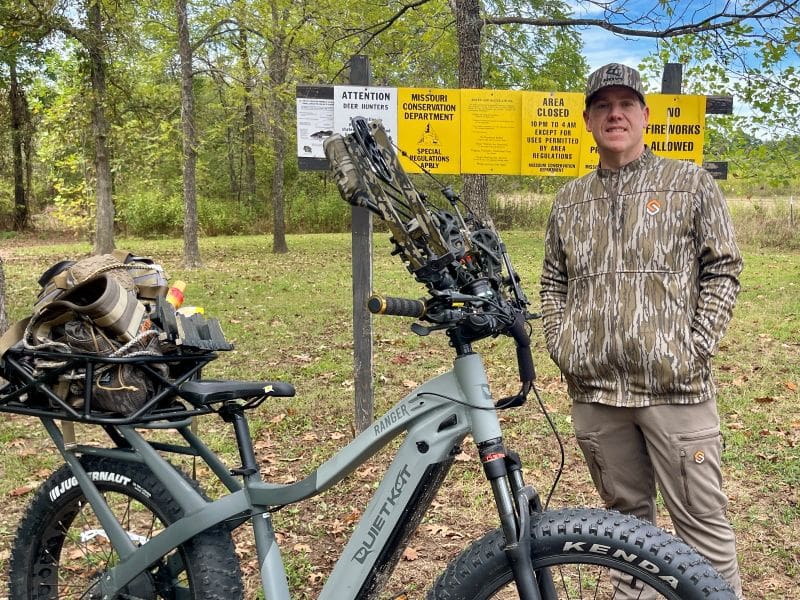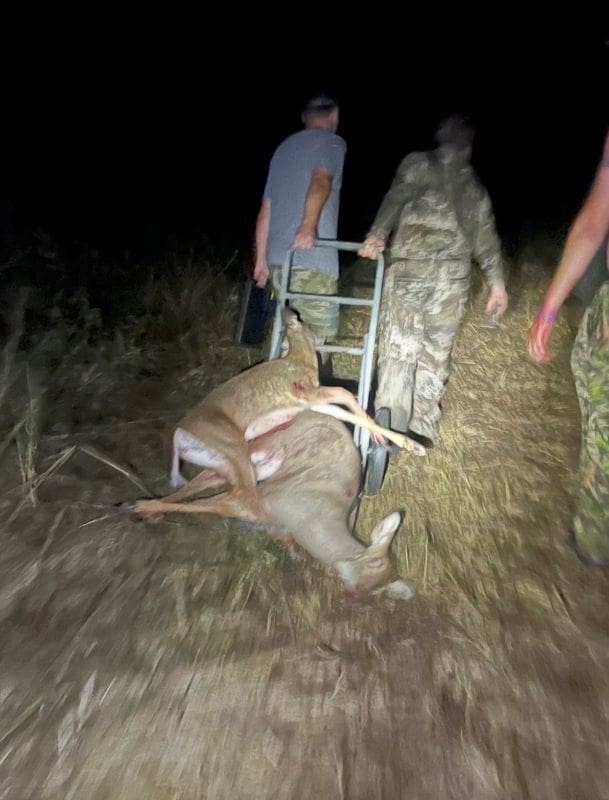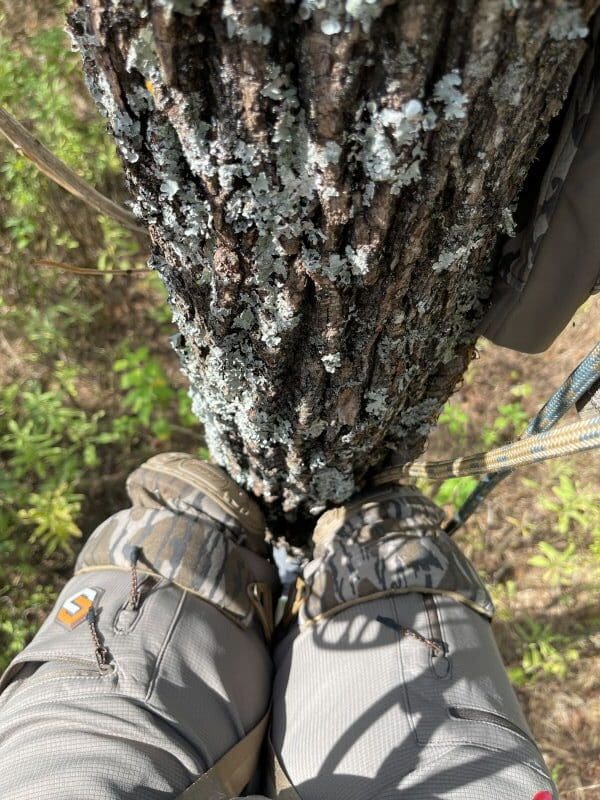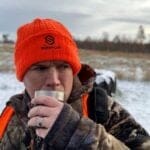September kicks off deer season in many states, sparking the yearly debate among hunters about whether or not to target does right away. To dig into that topic, three close friends and I made a trip to a public, bowhunting-only property along the Gasconade River. It’s our second year hunting this ground together. Last fall, we didn’t head in until early October and quickly found the place crowded with other hunters. This season, we decided to get a jump on things by hunting the opening weekend of Missouri’s archery season.
After helping set up camp for a couple of the guys staying multiple days, I pulled my clothes from my ScentLok Storage Stuff Sack, sprayed them with scent eliminator, and hopped on my electric bike to head to my evening spot. By 2:30 p.m., I was settled into my tree saddle, seventeen feet up, overlooking a tight pinch point between the river and a CRP field. The afternoon heat still lingered in the upper seventies to low eighties, but my Savanna Fuse Jacket & Pants kept me cool and scent-free while I waited for deer movement later in the day.

At 5:00 p.m., the first buzz came through our group chat: “I shot one.” A buddy had dropped the season’s first doe, which made it only thirty yards before crashing. Not long after, as I hunted until dark, another surprise awaited. When I climbed down and headed back toward the gravel road where my bike was stashed in the brush, I heard someone call out, “Hey!” My other friend stood at the edge of the road, bow in hand, proudly resting one foot on top of his own doe. Two deer down, and our group was off to a strong start.
After arriving at the camp, another message came through from my friend who had taken the first doe earlier. “I just shot another doe.” Between the four of us, we had three does down; it ended up being a late night of recovering and transporting deer, but it was a very successful and enjoyable adventure for our self-proclaimed hunting group, which we named The Deer Brigade on the Gasconade.
Some hunters view the early season as the perfect opportunity to fill the freezer, as we did on our public land hunt, or as a practical way to manage deer numbers. Others, however, prefer to hold off until later in the season. Like most things in hunting, there are pros and cons to both approaches. Understanding each side will help you decide what’s best for your land, your herd, and your overall hunting goals.

Pros
Helps Manage Herd Numbers Early
One of the strongest arguments for shooting does in September is herd management. Many properties deal with an overabundance of does. Harvesting them early can help maintain a more balanced buck-to-doe ratio and prevent the herd from outgrowing the available habitat. Removing excess does early in the season means fewer mouths competing for limited fall and winter food sources.
Reduces Pressure Later in the Season
Taking a doe or two early can reduce the need for more hunting pressure during the critical weeks of the rut. By filling doe tags in September, hunters can focus their efforts on mature bucks during peak movement later on, without risking disruption of prime rut activity by shooting does during that period.
Predictable Patterns
In September, deer behavior is much more predictable than in October and November. Does are often still on strict bed-to-feed patterns, which makes them easier to target with minimal disturbance. On our public land adventure, this led to a quick, efficient hunt, especially with archery equipment, before the woods became pressured and deer grew wary, as they did the year before.

Cons
Risk of Alerting and Educating Deer
Even though deer are more predictable in September, they are also susceptible to intrusion. Taking a doe early in the season can result in noise, scent, and commotion that could alert the rest of the herd, especially if something goes wrong with the shot or recovery. This can push deer off their current patterns just as the season is getting underway.
Potential to Disrupt Early Buck Patterns
Bucks and does often share food sources during September. Shooting a doe in the same area you plan to hunt a target buck could cause that buck to shift his range, especially if the hunt leaves behind ground scent or causes a noticeable disturbance. A single mistake early could cost you an opportunity later.
Unclear Population Picture
Early in the season, it can be challenging to get an accurate read on the total deer population for your hunting area. You might not yet know how many fawns have survived, how many bucks are summering there, or how the local herd is using the property. Shooting does too early could unintentionally thin the herd more than intended before you have the whole picture.
Finding the Right Balance
Whether or not to take does in September ultimately depends on your hunting and management goals. On public land, an early harvest can be exciting and a great way to put venison in the freezer. On private ground, the decision often comes down to hunting pressure and how much meat you want early in the season. If you aim to lower doe numbers and reduce pressure later on, taking one early can be a smart move. But if your focus is on targeting mature bucks, waiting until after the rut may be the better option. In the end, having a clear plan and sticking with it ensures your early-season choices support your long-term deer management and hunting success.

Tips for Minimizing Disturbance When Shooting Does Early
If you decide to harvest a doe in September, take steps to keep the area as undisturbed as possible so it doesn’t impact your buck hunting later.
- Hunt With the Right Wind – Only hunt when the wind and thermals are in your favor to avoid spreading scent throughout the area.
- Slip In and Out Quietly – Use low-impact entry and exit routes, preferably along field edges or downwind cover, to reduce noise and visual disturbance.
- Recover and Remove Quickly – Make a clean, ethical shot and recover the deer quickly to avoid prolonged commotion that could spook other deer.
- Limit Intrusion After the Shot – Avoid scouting, trimming lanes, or setting up new stands during the recovery period. Get in, get the deer, and get out.
By approaching early-season doe hunts carefully, you can achieve your harvest and management goals without sabotaging your chances at a mature buck when the rut rolls around.

